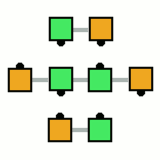|
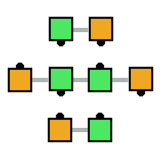
As with other circulates, dancers move forward to the next spot along a path. In the case of Ping Pong Circulate, there are two four-person paths, an "outside" path and an "inside" path, and the dancers move entirely within their own path. In this respect, Ping Pong Circulate is very much like All 8 Circulate from parallel waves, where the ends and the centers each move within their own path.
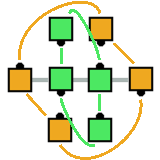
Each path consists of two positions in the wave and two positions not in the wave. The dancers who start not in the wave don't turn at all -- they are just walking forward to become part of the wave. The dancers who start in the wave must turn around 180 degrees to face back in, becoming part of a couple facing in.
The inside path consists of the very center two dancers (the dancers in the center of the wave) and the two dancers standing immediately behind them. The dancers from the center of the wave walk out and turn around, in the direction they were originally holding hands, to replace a dancer in the couple they were facing. The dancers who were not in the wave simply step straight ahead.
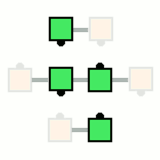
The outside path consists of the two dancers at the end of the wave and the other two dancers in the couples -- the ones who are not standing directly behind another dancer's back. (They will instead be directly facing one of the dancers in the center of the wave.) These dancers still walk forward without turning, but they walk diagonally, to replace a dancer at the end of the wave. Meanwhile, the dancers from the end of the wave walk around the outside of the square to become part of the couple.
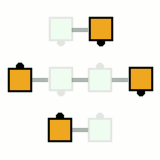
Note that the dancers from the end of the wave always walk around the outside, around everybody else. The dancers from the center of the wave stay on the inside of everybody else. From a right-hand 1/4 tag, it may feel like the dancers are "passing right shoulders" as they turn around to become a couple, but that's not the correct way to look at it. There are two separate circulate paths, one inside the other.
